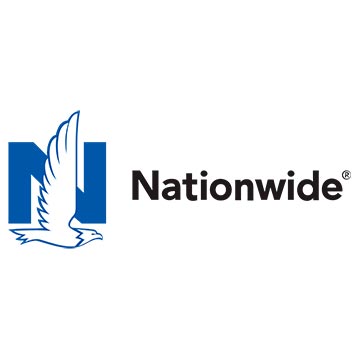Anti-Indemnity Statute
Indemnity clauses generally are more common to construction projects primarily due to the risks involved maintaining a safe work environment.
Start a Quote Online Find an Agent
Indemnity clauses generally are more common to construction projects primarily due to the risks involved maintaining a safe work environment. Indemnity is required from the general contractor by a project owner and, in turn, subcontractors by the general. An 'upstream' flow of risk transfer. Thus, a law that defines the scope of legal liability that one party may transfer to another in a contract. In the construction industry, contractual indemnity and additional insured coverage are widely regarded as separate but parallel risk transfer paths. The two are ordinarily intended to complement each other. A perceived imbalance in negotiating power between contractor and subcontractor led to the advent of the anti-indemnity statute. To date, 46 states have enacted anti-indemnity statutes that curtail indemnity agreements. The remaining states rely on common law to assess enforceability. "In some states, anti-indemnity statutes also limit the ability of one contracting party to require additional insured status under the other party's insurance policies."
There are three levels of indemnification: broad, intermediate, and limited. A Broad Form indemnity agreement can require a subcontractor to indemnify the owner/general contractor even if the owner/general contractor is 100% at fault. Six states allow broad form indemnity either by statute or case law, and some of them require that such indemnity is allowed only if it is "clear and unequivocal". Seventeen states prohibit broad indemnity-allowing intermediate indemnity instead.
In an Intermediate indemnity agreement, the subcontractor assumes responsibility for its own sole negligence or partial negligence. If the owner/general contractor is solely at fault, there is no indemnity. There are two types of intermediate indemnity: (a) full indemnity-where the subcontractor is partially at fault, he pays all the damages. This allows an owner/general contractor who was 99% at fault to receive indemnity from the sub, who was only 1% at fault; the other, (b) partial indemnity-is on a sliding scale based on the extent of the sub's negligence. Setting a cap, the owner/general who is 51% at fault is indemnified only for 49% of the damages. Twenty-four states prohibit intermediate indemnity clauses.
All states allow Limited indemnity provisions. A subcontractor assumes only the responsibility for its own negligence-if it is solely at fault. There is no protection if the owner/general contractor is even partially at fault.
The standard unendorsed CGL policy's wording provides Broad Form Indemnification coverage. Even though the CGL provides coverage for the broadest form of indemnity, not all indemnity obligations are covered by insurance. While contractual liability insurance in CGL policies has it benefits, two specific problems with the coverage often arise. Coverage may not be available (1) when the indemnity agreement is void, and, (2) when the policy is endorsed to exclude indemnity agreements. More and more legislatures are prohibiting broad form and intermediate form indemnity agreements. When a contract includes an indemnity clause that is prohibited or void by statute, the indemnity clause no longer falls within the definition of "insured contract". This means that insurance coverage is no longer directly available for the indemnity agreement. Two endorsements, CG 21 39 and CG 24 26 remove or restrict coverage. The first simply removes coverage for indemnity agreements by deleting indemnity agreements from its list of "insured contracts". The other, CG 24 26, essentially removes coverage for broad form indemnity agreements.
As mentioned earlier, 46 states have enacted anti-indemnity statutes that curtail indemnity agreements. Some of those statutes have evolved to specifically restrict the insurance that can be provided to an upstream party. "Anti-indemnity statutes in Arizona, Colorado, Georgia, Kansas, Montana, and Oregon void as against public policy additional insured coverage for sole negligence. Legislatures in those states generally equate the agreement to provide insurance to the agreement to indemnify; thus, they reason, agreements to provide insurance for an additional insured's own negligence should likewise be void as against public policy."
Montana statute prohibits indemnification (or additional insured rights) for any character of an indemnitee's own negligence. "Except as provided in subsections (2) & (3), a construction contract provision that requires one party to the contract to indemnify, hold harmless, insure, or defend the other party to the contract caused by the negligence, recklessness, or intentional misconduct of the other party is void as against the public policy of this state."(MCA 28-2-2111) Subsection (2) makes allowances for fault of a third party or the indemnifying party's fault, and project specific insurance; while (3) provides that "this section" does not apply to indemnity of a surety.
Thus, indemnity clauses, at least in Montana, need to be carefully reviewed by counsel. One last important point: make certain that the "venue and choice of law" clauses are reviewed especially careful. That could change the whole game.
Article By: Dennis Gambill - The author is an Insurance Litigation consultant. Adjunct professor at EMC for 8 years-Risk & Insurance. 40+ years-both MGA and agency experience.

We'll Shop Around So You Don't Have To
Start a quote by filling out our online application providing us with the basic information we need to perform a quote. It only takes a few minutes and we'll respond within one business day.
Start a Quote Contact UsWe're Hiring
We're looking for industry experienced folks to join our team. Contact us at 406-652-4180 to inquire.
Top 10 Reasons You Need Cyber Liability Insurance
No matter what type of business you run, where you're located, or how much time you spend online – your business needs Cyber Liability Insurance.
business riskProfessional Liability Insurance
Almost every business or firm can become liable for injury to others resulting from a condition on its premises or arising out of its operations, products, completed work or actions of its employees.
business riskAnti-Indemnity Statute
Indemnity clauses generally are more common to construction projects primarily due to the risks involved maintaining a safe work environment.
business riskOur Insurance Partners











— Protecting Everything You Value Most —
Darnielle Insurance is available to answer your questions. We are located at 1320 28th Street West, Billings, MT 59102. Give us a call at 406-652-4180.